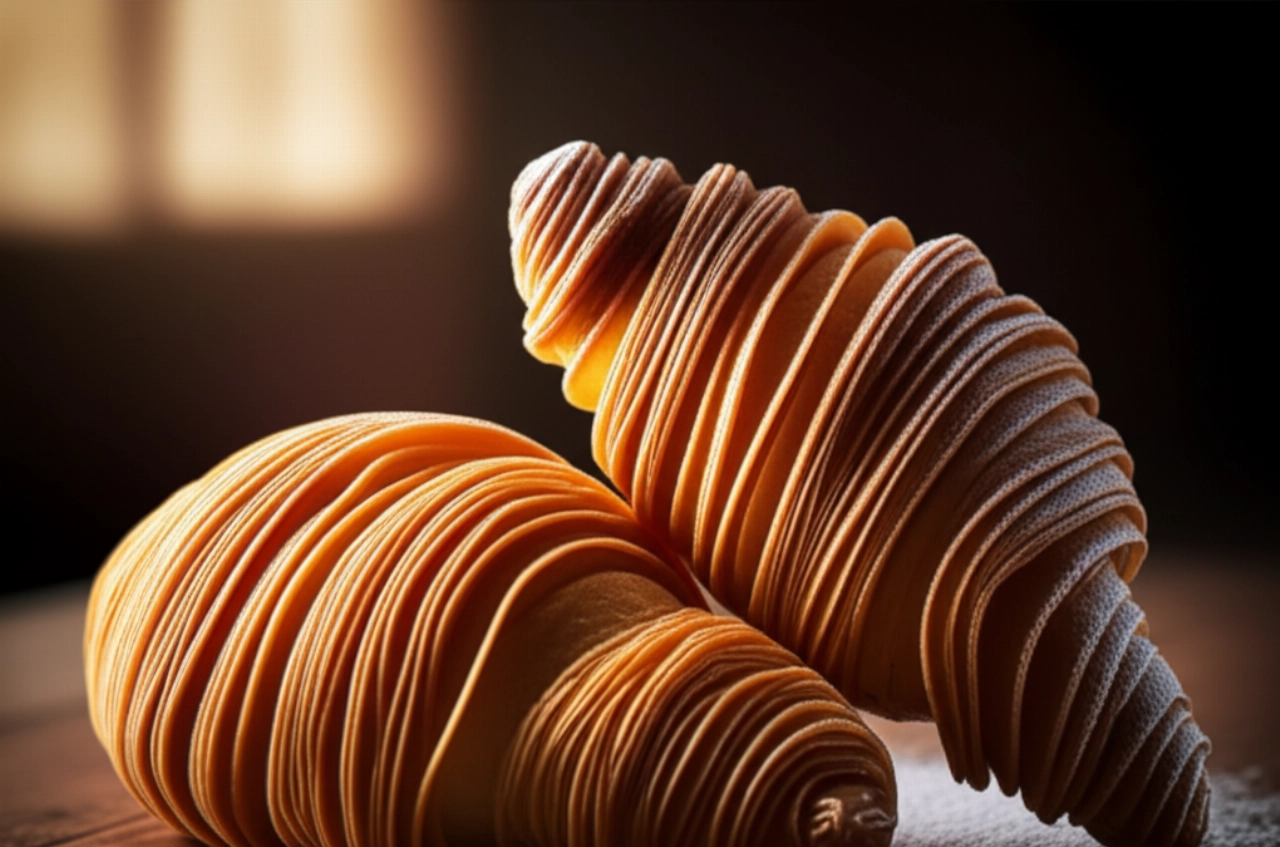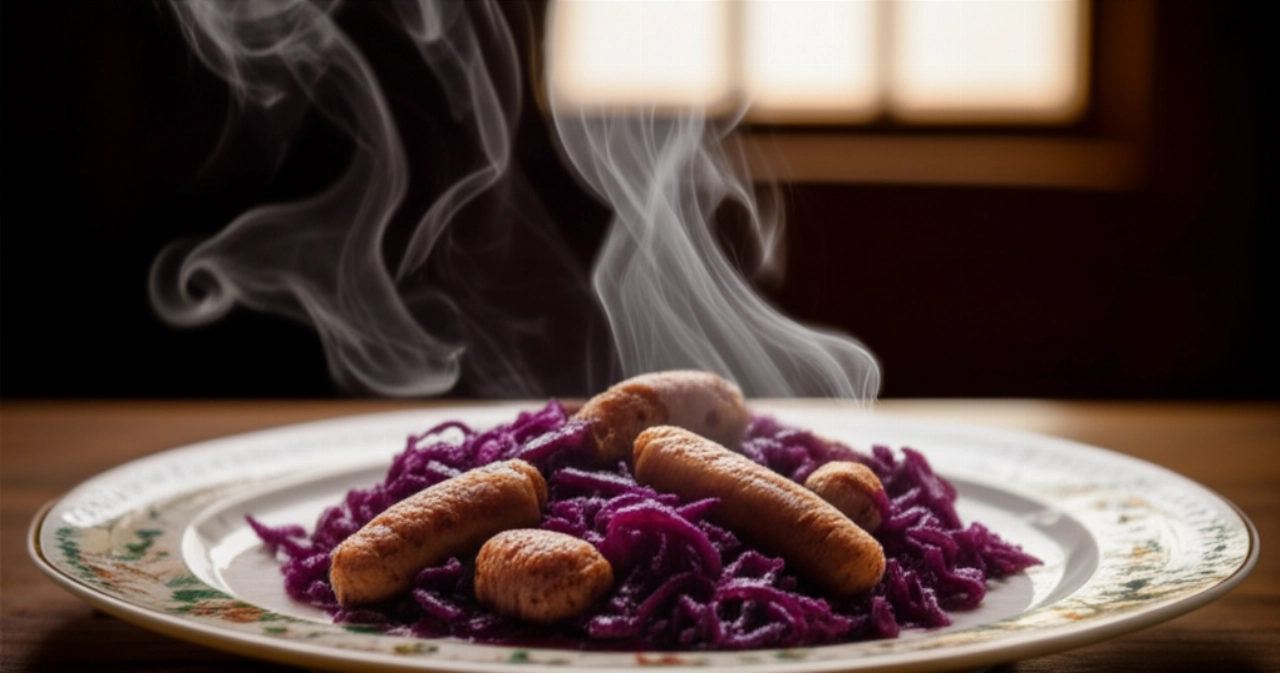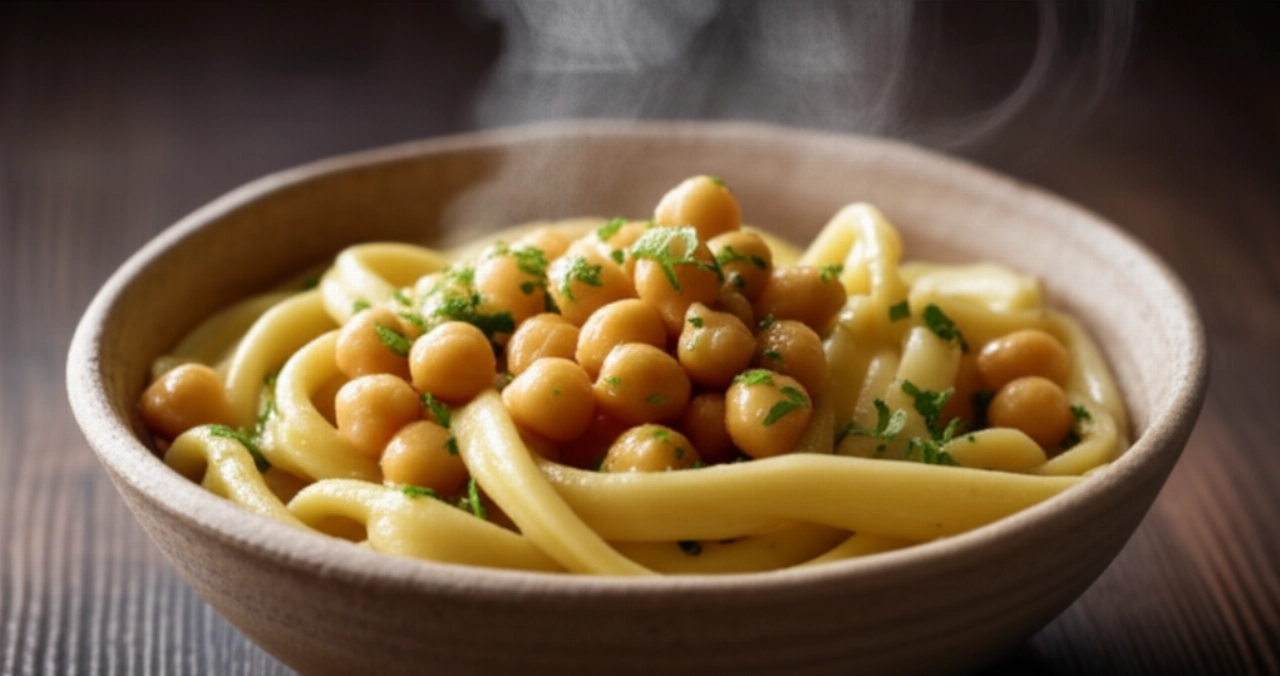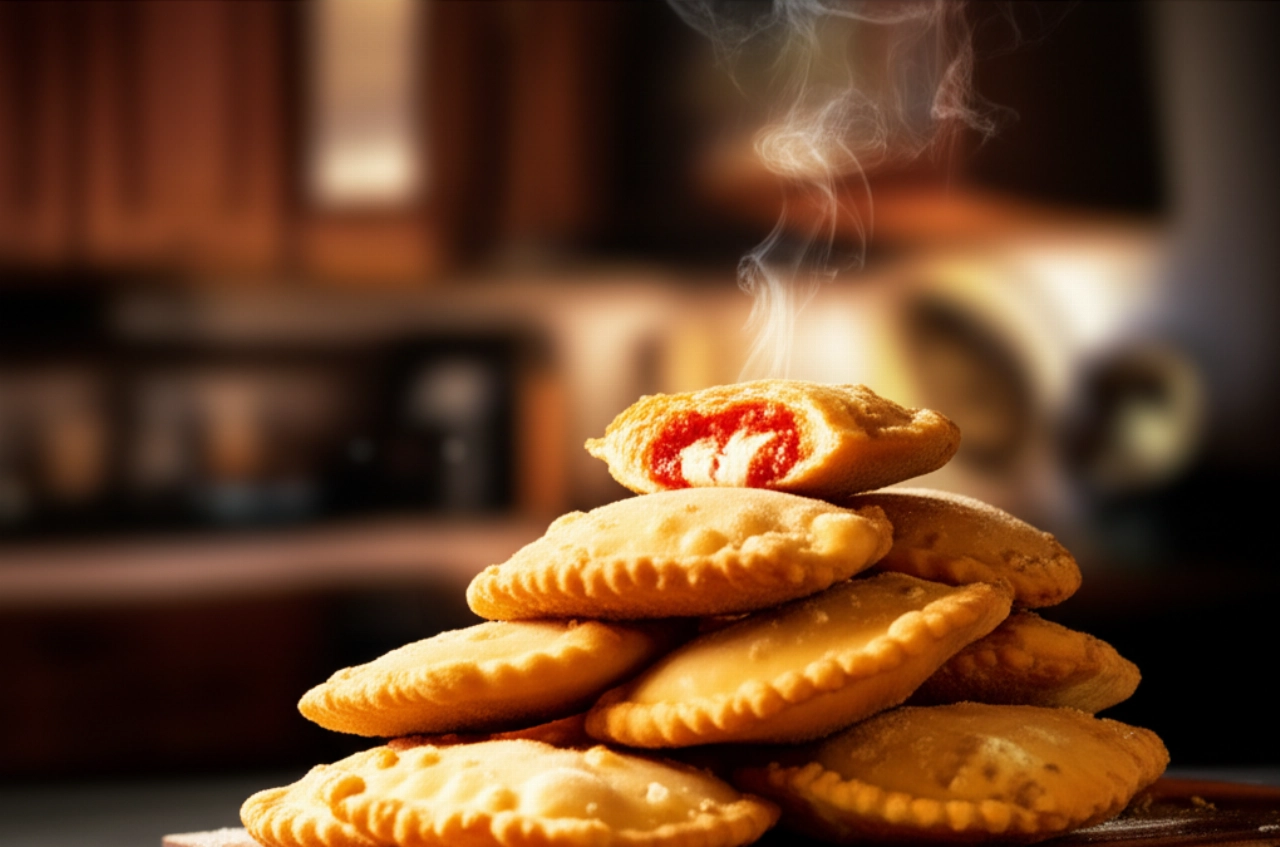Imagine the unmistakable aroma filling your kitchen, a rustic and inviting scent that takes you back in time, to grandma's snacks or trips to the Marche region. We're talking about Urbino's Crescia Sfogliata, a true gem of Marche gastronomy, often confused with piadina, but with its own unique soul and a flakiness that makes it unmistakable.
But how many times have you tried to make it and the result wasn't what you hoped for? Too tough, not flaky enough, far from the memory of the true Marche crescia you tasted in some typical trattoria? I understand the frustration. Finding the authentic recipe, one that guarantees perfect flakiness and melt-in-your-mouth tenderness, can seem like a challenge.
Fear not! I'm here, your trusted chef friend, to reveal every secret of Urbino's Crescia Sfogliata, the real one. Forget past failures: with this detailed guide, full of tricks and practical tips, success is guaranteed and you'll feel like a true guardian of Marche tradition. I'll guide you step by step to get a crescia with well-defined layers, crispy outside and incredibly tender inside, just like the one grandmothers have been preparing for generations. Get ready for applause!
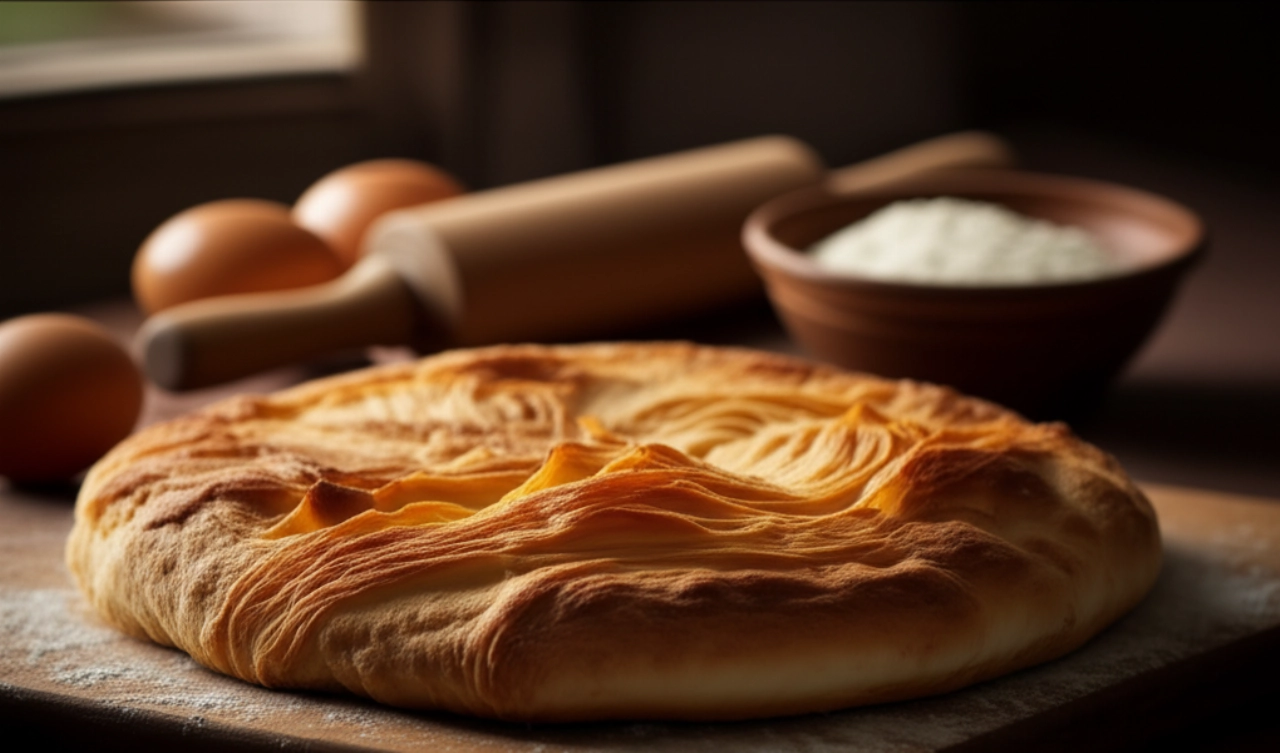
Crescia Sfogliata: The Secret to Perfect Flakiness and Foolproof Tenderness
The strategic pillar of this recipe, what truly makes it unique and foolproof, is the promise of impeccable flakiness and melt-in-your-mouth tenderness. Not just a simple thick piadina, but a true masterpiece of layers and flavors. I'll reveal all the secrets to getting a crescia sfogliata with well-defined layers, crispy outside and incredibly tender inside, just like the Marche grandmothers', without the risk of it becoming tough or rubbery. This is our pact: your Crescia will be a guaranteed success!
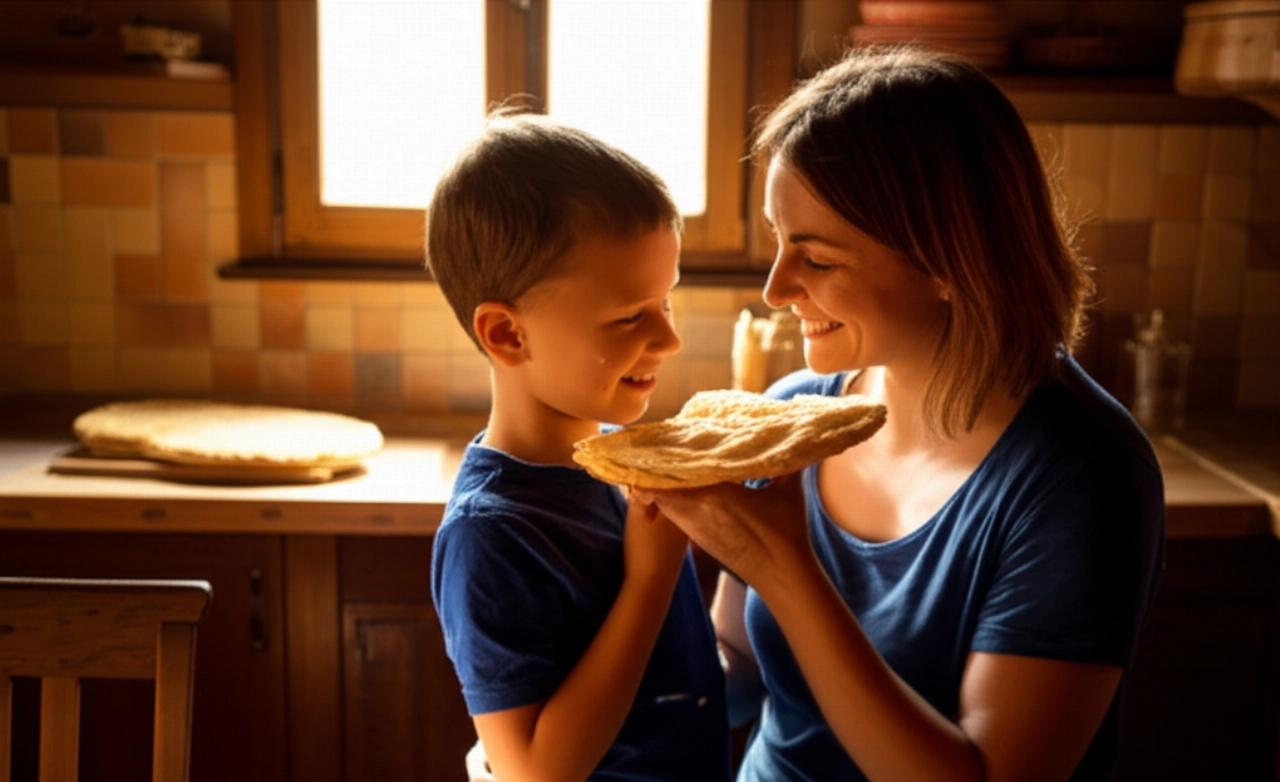
Smart Ingredients for a Textbook Crescia Sfogliata: The Choice That Makes the Difference
This isn't just a list, but a reasoned selection. Each ingredient plays a precise role in ensuring the perfect flakiness and consistency of your crescia. Trust me, quality here is fundamental.
- 00 Flour (medium strength, approx. W 180-220): Not just any flour! A flour with good strength will guarantee an elastic and resistant dough, capable of retaining air during leavening and developing that layered structure we so desire. If you use a flour that's too weak, the dough will be difficult to work with and the flakiness will suffer.
- High-quality pork lard: This is the secret ingredient, the true star of the flakiness! Lard, unlike butter or oil, has a higher melting point and a consistency that allows for the creation of very thin, well-separated layers. It gives the crescia a unique, rustic, and enveloping flavor. Don't think of substituting it with butter or oil; the result wouldn't be the same.
- Lukewarm water: The water must be lukewarm, not hot and not cold. Why? Lukewarm water helps dissolve the yeast faster and activate it, promoting uniform leavening and a soft dough.
- Fresh brewer's yeast: Always choose fresh yeast; it's more active and guarantees better leavening than dry yeast, giving the crescia that lightness and internal airiness that make it irresistible.
- Fine salt: Balances flavors and strengthens the gluten structure in the dough. Don't overdo it, but don't forget it!
- Freshly ground black pepper: A touch of pepper is traditional and adds a slight kick that enhances the rustic flavor of the crescia. It's not mandatory, but I highly recommend it for greater authenticity.
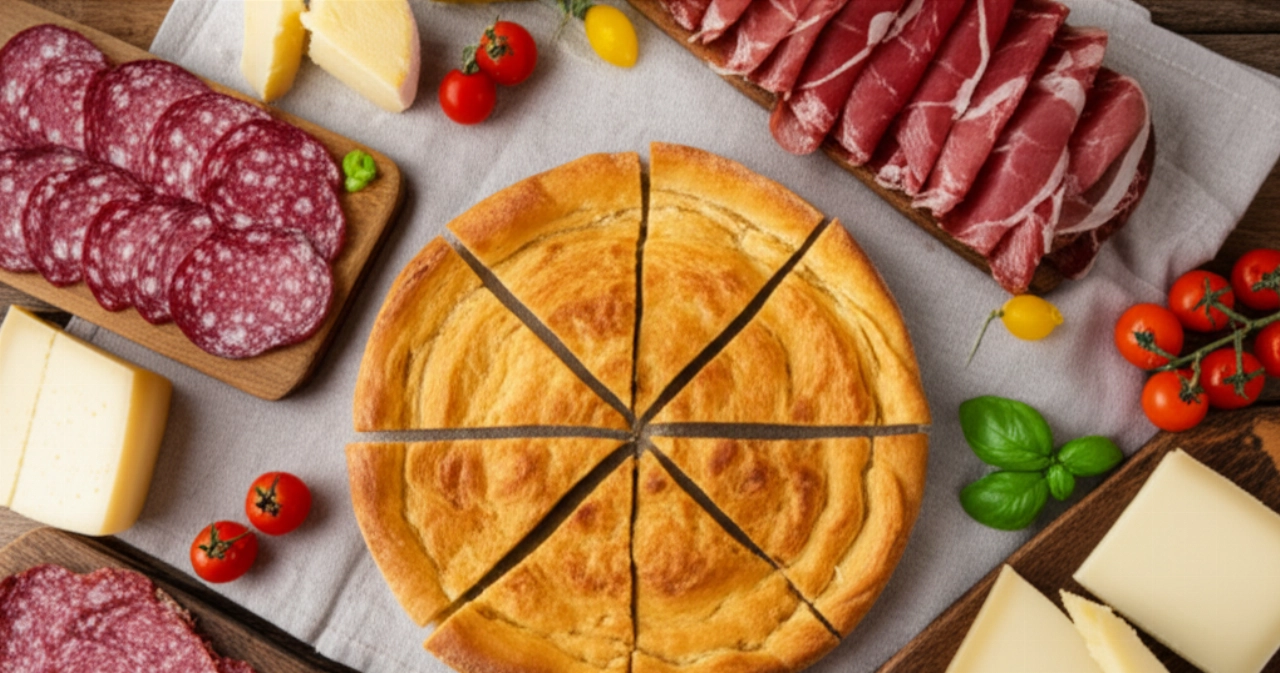
3 Common Mistakes That Make Crescia Tough or Not Flaky (and How to Avoid Them)
I've seen the disappointment too many times in the eyes of those who try to make crescia and don't get the desired result. Here are the most common mistakes you can easily avoid, thanks to my "expert grandma" tips:
- Not using lard or using too little: As I've already told you, lard is FUNDAMENTAL for flakiness. If you substitute it with other fats, the crescia won't flake correctly and will be more similar to a piadina. If you use too little, the layers won't separate well. Follow the indicated quantities and don't be afraid of this ingredient; it's the secret of tradition!
- Poorly working the dough or not respecting resting times: Crescia dough needs to be worked for a long time to develop the gluten well, making it elastic and easy to roll out. But, be careful, it also needs to rest! Resting times are crucial to allow the dough to relax and the yeast to act, ensuring perfect flakiness and final tenderness. Don't rush!
- Cooking the crescia at too low or too high a temperature: A temperature that's too low will make it dry and tough, without the desired flakiness. A temperature that's too high will burn it outside while leaving it raw inside. Cooking must be quick but effective, on a very hot surface, to allow the lard inside to create steam and separate the layers.
The Extra Touch: My Grandma's Tip for a Foolproof Crescia
My grandmother, a true wizard of Marche cuisine, always told me that Crescia Sfogliata isn't just a recipe, but an art that requires patience and a "feel" for the dough. Her secret for truly spectacular flakiness was this: after rolling out the dough and spreading the lard, before rolling it up, she would fold it like a book two or three times. This extra step, known by few, creates even more layers and makes the final flakiness even more evident and delicious. Try it, and you'll see the difference!
Let's Prepare Urbino's Crescia Sfogliata Together: The Step-by-Step Guide
Ingredients:
- 500 g 00 flour (medium strength)
- 250 ml lukewarm water
- 10 g fresh brewer's yeast
- 10 g fine salt
- A pinch of ground black pepper (optional)
- 150-200 g high-quality pork lard (for the dough and for flaking)
Tools Needed:
- Large bowl
- Rolling pin (preferably long and thin)
- Pastry board or clean work surface
- Non-stick pan or cast iron griddle
Procedure:
- Prepare the base dough: In a large bowl, dissolve the fresh brewer's yeast in lukewarm water. Add the flour, salt, and pepper (if using). Begin mixing with a spoon, then transfer the dough to a lightly floured pastry board.
- Work the dough with love: Knead the dough vigorously for at least 10-15 minutes. It should become smooth, elastic, and not sticky. If necessary, add a pinch of flour, but don't overdo it. The dough should "feel" your hands and become velvety.
- First rest: Form the dough into a ball, lightly grease it with a little lard, and place it in the bowl. Cover with a damp cloth or plastic wrap and let it rise in a warm place for about 1 and a half - 2 hours, or until it has doubled in volume. (See photo 1: Leavened dough)
- Prepare the lard for flaking: Meanwhile, soften the remaining lard at room temperature; it should be creamy and easily spreadable.
- Roll out and flake: Transfer the leavened dough to the pastry board lightly greased with lard (not floured!). With a rolling pin, roll out the dough into a very thin sheet, almost transparent, in a rectangular shape (approx. 60x40 cm). The thinner it is, the better the flakiness will be. (See photo 2: Dough rolled thin)
- Spread the lard: Spread the softened lard evenly over the entire surface of the sheet. Don't skimp; it's the secret to flakiness!
- Roll and fold (grandma's secret!): Gently roll the sheet onto itself, starting from the longest side, forming a tight, long cylinder. Now, for grandma's touch, fold this cylinder like a book: first in half, then in half again, obtaining a more compact "package." This extra step creates additional layers! (See photo 3: Dough rolled and folded)
- Second rest: Cover the "package" with plastic wrap and let it rest at room temperature for at least 30 minutes. This will relax the gluten and make the final rolling easier.
- Form the cresce: Divide the cylinder into 4-6 equal pieces (depending on the desired size for your cresce). Each piece will be a crescia. Lightly flatten each piece with the palm of your hand.
- Roll out individual cresce: With a rolling pin, roll out each piece into a disc about 20-25 cm in diameter and about 3-4 mm thick. Don't roll them too thin, otherwise they won't flake well. (See photo 4: Crescia ready for cooking)
- Perfect cooking: Heat a non-stick pan or cast iron griddle over medium-high heat. Do not add fat. When it's very hot, cook one crescia at a time for about 2-3 minutes per side, or until golden and you see the classic "bolles" and flakiness appear. The crescia must cook quickly to remain soft inside and crispy outside. (See photo 5: Crescia cooking)
- Serve and enjoy: Serve the Crescia Sfogliata hot, cut into wedges, accompanied by typical Marche cured meats like Prosciutto di Carpegna, fresh cheeses like Squacquerone, or sautéed wild greens. It's an unforgettable taste experience!
Tips and Frequently Asked Questions about Crescia Sfogliata
I know you might still have some doubts, and that's normal! Here are the answers to the most common questions to ensure your total success.
- Can I substitute lard with butter or oil?
- No, I strongly advise against it. Lard is the key ingredient for achieving the flakiness and authentic flavor of Crescia Sfogliata. Butter and oil do not have the same properties, and the final result will be completely different, more similar to a piadina or a flatbread, but not to true crescia.
- Can I prepare the dough in advance?
- Absolutely yes! You can prepare the base dough, let it rise, and then store it in the refrigerator, well covered with plastic wrap, for 12-24 hours. Before rolling it out, let it return to room temperature for about 30 minutes. You can also form the cresce and store them in the refrigerator for a few hours before cooking.
- Can Crescia Sfogliata be frozen?
- Yes, both raw and cooked!
- Raw: After forming the discs, place them on a tray separated by parchment paper and freeze them. Once frozen, you can transfer them to food bags. To cook them, take them out of the freezer 30 minutes beforehand and cook them as per the recipe.
- Cooked: Let the cooked cresce cool completely, then wrap them individually in plastic wrap and freeze them. To enjoy them, heat them in a pan or oven until they are fragrant again.
- Why isn't my crescia flaking well?
- There are a few common reasons:
- Insufficient or poorly spread lard: Make sure to use the right amount and spread it evenly.
- Dough not thin enough: The key is to roll out the initial sheet almost transparently.
- Resting times not respected: The dough needs to relax to flake well.
- Incorrect cooking temperature: It needs to be very hot to create the steam that separates the layers.
- What is the difference between Crescia Sfogliata and Piadina Romagnola?
- Although both are "piadine," Crescia Sfogliata is distinguished by the use of lard which, combined with the rolling and folding technique, creates evident internal flakiness. Piadina Romagnola, on the other hand, is usually thicker, less flaky, and has a more compact consistency. Crescia is richer and more fragrant, with a more complex texture.
Your Masterpiece is Ready: Enjoy the True Marche Tradition!
There you have it! Now you no longer just have a recipe, but all the secrets to bring a piece of Marche history and tradition to your table, a dish that tastes of home, authenticity, and love. You've learned not only "how to do it," but "why" behind each step, transforming the fear of making mistakes into the certainty of success.
Don't be afraid to experiment and make this recipe your own. Cooking is an act of creativity and a way to connect with your roots. But start from this solid base, and you'll see that applause will not be lacking. Your Crescia Sfogliata will be a triumph of flavors and textures, a true Marche embrace!
Have you tried our recipe? We're very curious to see your masterpiece! Leave a comment below, tell us how it went, or share a photo on Instagram by tagging @CercaRicette.it. If you loved this Crescia, you can't miss our recipe for Typical Marche Cured Meats or for a perfect side dish like Sautéed Wild Greens. Keep exploring Italian cuisine with us!
